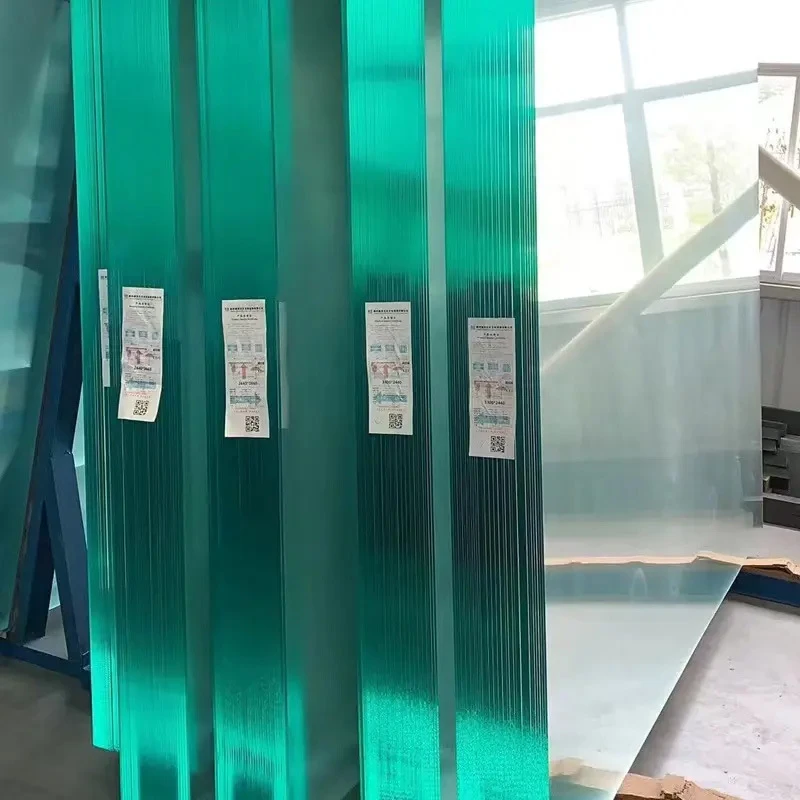Tempered Laminated Glass A Modern Solution for Safety and Aesthetics
In the realm of architectural design and construction, tempered laminated glass has emerged as a popular choice for both safety and aesthetics. This innovative material combines the strength of tempered glass with the protective features of laminated glass, creating a product that is not only functional but also visually appealing.
Tempered glass is produced through a process of extreme heating and rapid cooling, which increases its strength compared to regular glass. It is designed to withstand high levels of stress and impact, making it a preferred option for various applications, including windows, doors, and facade systems. One of the most significant advantages of tempered glass is its safety feature; when broken, it shatters into small, blunt pieces rather than sharp shards, reducing the risk of injury.
Laminated glass, on the other hand, consists of two or more layers of glass bonded together with an interlayer, usually made of polyvinyl butyral (PVB). This interlayer provides additional strength and holds the glass layers together in the event of breakage, preventing shattering. This feature is particularly beneficial in areas prone to severe weather conditions, vandalism, or accidental impacts.
By combining these two types of glass, tempered laminated glass offers an unparalleled level of safety. It is designed to withstand impacts, resist penetration, and provide protection against UV rays. This makes it an ideal choice for areas such as storefronts, skylights, and glass balustrades, where safety and aesthetics are paramount.
tempered laminated glass
Another remarkable benefit of tempered laminated glass is its versatility in design. Architects and designers can choose from a wide range of finishes, colors, and textures, enabling them to create stunning visual effects and unique facades. The glass can also be treated with coatings to enhance energy efficiency or reduce glare. This adaptability makes tempered laminated glass suitable for both residential and commercial projects.
The performance characteristics of tempered laminated glass extend beyond safety and aesthetics. It also boasts excellent sound insulation properties, which is crucial in urban environments where noise pollution can be a significant concern. This feature makes it a popular choice for offices, hotels, and residential buildings located in bustling city centers.
Moreover, the energy efficiency of this type of glass cannot be overlooked. When incorporated into building designs, tempered laminated glass can help reduce energy consumption by minimizing heat transfer. This not only promotes a more sustainable approach to construction but also leads to reduced heating and cooling costs for building occupants.
As building codes become increasingly stringent regarding safety and energy efficiency, the demand for tempered laminated glass continues to grow. It is seen as a sustainable solution that not only meets but exceeds the necessary requirements for modern architectural applications.
In conclusion, tempered laminated glass represents a significant advancement in glass technology, offering a fusion of safety, durability, and aesthetic appeal. Its unique properties make it a preferred choice for architects and builders aiming to construct safe, beautiful, and energy-efficient buildings. As this material continues to evolve, it will undoubtedly play a crucial role in shaping the future of architectural design. As we look to the future, the integration of tempered laminated glass in constructions will likely become more prevalent, enhancing both the safety and beauty of our built environments.
 Afrikaans
Afrikaans  Albanian
Albanian  Amharic
Amharic  Arabic
Arabic  Armenian
Armenian  Azerbaijani
Azerbaijani  Basque
Basque  Belarusian
Belarusian  Bengali
Bengali  Bosnian
Bosnian  Bulgarian
Bulgarian  Catalan
Catalan  Cebuano
Cebuano  Corsican
Corsican  Croatian
Croatian  Czech
Czech  Danish
Danish  Dutch
Dutch  English
English  Esperanto
Esperanto  Estonian
Estonian  Finnish
Finnish  French
French  Frisian
Frisian  Galician
Galician  Georgian
Georgian  German
German  Greek
Greek  Gujarati
Gujarati  Haitian Creole
Haitian Creole  hausa
hausa  hawaiian
hawaiian  Hebrew
Hebrew  Hindi
Hindi  Miao
Miao  Hungarian
Hungarian  Icelandic
Icelandic  igbo
igbo  Indonesian
Indonesian  irish
irish  Italian
Italian  Japanese
Japanese  Javanese
Javanese  Kannada
Kannada  kazakh
kazakh  Khmer
Khmer  Rwandese
Rwandese  Korean
Korean  Kurdish
Kurdish  Kyrgyz
Kyrgyz  Lao
Lao  Latin
Latin  Latvian
Latvian  Lithuanian
Lithuanian  Luxembourgish
Luxembourgish  Macedonian
Macedonian  Malgashi
Malgashi  Malay
Malay  Malayalam
Malayalam  Maltese
Maltese  Maori
Maori  Marathi
Marathi  Mongolian
Mongolian  Myanmar
Myanmar  Nepali
Nepali  Norwegian
Norwegian  Norwegian
Norwegian  Occitan
Occitan  Pashto
Pashto  Persian
Persian  Polish
Polish  Portuguese
Portuguese  Punjabi
Punjabi  Romanian
Romanian  Russian
Russian  Samoan
Samoan  Scottish Gaelic
Scottish Gaelic  Serbian
Serbian  Sesotho
Sesotho  Shona
Shona  Sindhi
Sindhi  Sinhala
Sinhala  Slovak
Slovak  Slovenian
Slovenian  Somali
Somali  Spanish
Spanish  Sundanese
Sundanese  Swahili
Swahili  Swedish
Swedish  Tagalog
Tagalog  Tajik
Tajik  Tamil
Tamil  Tatar
Tatar  Telugu
Telugu  Thai
Thai  Turkish
Turkish  Turkmen
Turkmen  Ukrainian
Ukrainian  Urdu
Urdu  Uighur
Uighur  Uzbek
Uzbek  Vietnamese
Vietnamese  Welsh
Welsh  Bantu
Bantu  Yiddish
Yiddish  Yoruba
Yoruba  Zulu
Zulu 

